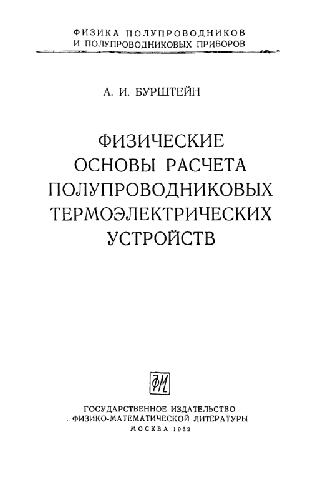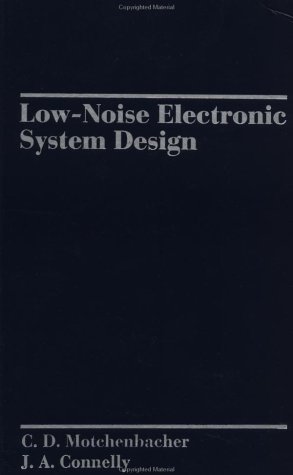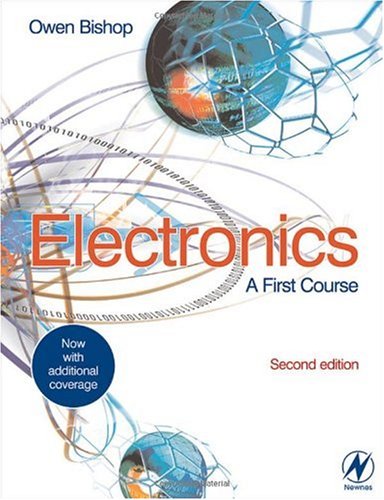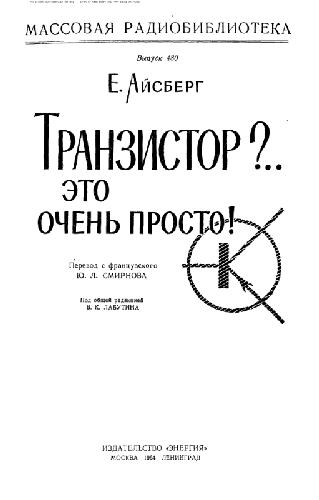Glenn R. Blackwell9780849385919, 0-8493-8591-1
Table of contents :
Electronic Packaging Handbook……Page 0
Organization……Page 4
Contributors……Page 6
Contents……Page 7
1.2.1 Introduction……Page 10
1.2.2 The Process View of Production……Page 13
Quality Function Deployment……Page 14
1.3.2 Systems Engineering Theory and Concepts……Page 16
Functional Analysis……Page 17
Synthesis……Page 18
Evaluation and Decision……Page 19
Description of System Elements……Page 21
Design Development……Page 22
Electronic System Design……Page 24
Budget Requirements Analysis and Project Proposal……Page 27
Project Management……Page 28
Time Control of the Project……Page 30
1.4 Quality Concepts……Page 31
1.4.1 Design of Experiments……Page 33
Multivari Chart……Page 34
Components Search……Page 35
Variables Search……Page 37
Full Factorial Analysis……Page 38
Realistic Tolerances Parallelogram Plots……Page 39
Precontrol……Page 40
1.5.1 Introduction……Page 41
1.5.2 Computers and Types of Documentation……Page 42
Axiomatic Theory of Design……Page 44
Design Guidelines……Page 45
1.7.1 Introduction and Definitions……Page 46
Registration, Europe……Page 47
Registration, U.S.A…….Page 48
1.7.4 Implementation: Process Flow……Page 49
Third Stage……Page 50
Fourth Stage……Page 51
Benefits of ISO 9000……Page 52
1.7.7 ISO 9000 Summary……Page 53
1.9 Reference and Standards Organizations……Page 54
References……Page 56
2.2 SMT Overview……Page 58
3. (Missing)……Page 59
2.3 Surface Mount Device (SMD) Definitions……Page 63
2.4 Substrate Design Guidelines……Page 65
2.5 Thermal Design Considerations……Page 67
2.6 Adhesives……Page 69
2.6.1 Adhesive Characteristics……Page 70
Failure Characteristics during Rework……Page 71
2.6.2 Adhesive Application Techniques……Page 72
Pin-Transfer……Page 73
2.6.3 Dot Characteristics……Page 74
2.6.4 Adhesive Process Issues……Page 76
2.6.5 Adhesives for Thermal Conduction……Page 77
Dielectric Strength, in Volts/Mil……Page 78
Color……Page 79
2.6.6 Electrically Conductive Adhesives……Page 80
2.6.7 Adhesives for Other Purposes……Page 81
2.7.1 Solderability……Page 82
2.7.2 Flux……Page 84
Flux Application……Page 85
2.7.3 Solder Paste……Page 86
2.7.4 Paste-In-Hole Technology……Page 88
2.8.2 Moisture Sensitivity of Plastic Packages……Page 89
2.8.3 Part Placement……Page 91
2.9 Reflow Soldering……Page 94
Post-Reflow Inspection……Page 96
2.11 Prototype Systems……Page 97
Terms and Definitions……Page 98
References……Page 99
Other Sources……Page 100
Conferences Directly Related to SMT……Page 101
4.1 Introduction……Page 103
4.3 Known Good Die……Page 104
4.4 Chip on Board……Page 105
4.5.1 Flip Chip Overview……Page 106
Introduction……Page 109
Flip Chip Benefits……Page 110
The Solder Joint……Page 111
Flip Chip Solder Bump Deposition Processes……Page 112
Benefits and Drawbacks of Printed Solder Bumps……Page 119
Flip Chip Handling and Placement Equipment……Page 122
Fluxes and Underfills……Page 123
Acknowledgments……Page 126
4.6 Chip-Scale Packages……Page 127
Bibliography……Page 129
5.1 Introduction……Page 131
5.2.1 Board Types, Materials, and Fabrication……Page 132
5.2.2 Design of Printed Wiring Boards……Page 136
5.2.3 PWB Interconnection Models……Page 138
References……Page 145
5.3 Basic Circuit Board Design: Overview and Guidelines……Page 146
5.4 Prototyping……Page 147
5.5 DFM and DFT Issues……Page 148
5.6.1 Board Warpage……Page 151
5.6.2 Board Surface Finishes……Page 152
5.7.1 Grounds……Page 153
Analog Design……Page 154
Digital Design……Page 155
5.8 Simulation……Page 156
5.9.1 Institute for Interconnecting and Packaging Electronic Circuits (IPC)……Page 157
Military……Page 158
References……Page 159
6. EMC and Printed Circuit Board Design……Page 161
6.1.1 Hidden RF Characteristic of Passive Components……Page 162
Resistors……Page 164
Transformers……Page 165
6.1.2 How and Why RF Energy is Created Within the PCB……Page 166
6.1.3 Concept of Flux Cancellation (Flux Minimization)……Page 170
6.1.4 Common-Mode and Differential-Mode Currents……Page 171
Common-Mode Currents……Page 172
6.1.5 RF Current Density Distribution……Page 175
6.1.6 Skin Effect and Lead Inductance……Page 176
6.1.7 Grounding Methods……Page 178
Single-Point Grounding……Page 179
Multipoint Grounding……Page 180
6.1.8 Ground And Signal Loops (Excluding Eddy Currents)……Page 181
6.1.9 Aspect Ratio—Distance Between Ground Connections……Page 182
6.1.10 Image Planes……Page 183
6.1.11 Slots in an Image Plane……Page 185
6.1.12 Partitioning……Page 186
Fundamental Principles……Page 188
Fundamental Concepts……Page 189
Section 6.1 References……Page 190
6.2.1 Overview on Transmission Lines……Page 191
Microstrip Topology……Page 192
Embedded Microstrip Topology……Page 194
Single Stripline Topology……Page 195
Dual or Asymmetric Stripline Topology……Page 196
Differential Microstrip and Stripline Topology……Page 198
6.2.3 Relative Permittivity (Dielectric Constant)……Page 199
6.2.4 Capacitive Loading of Signal Traces……Page 202
Section 6.2 References……Page 203
6.3.1 Impedance Matching—Reflections and Ringing……Page 204
6.3.2 Calculating Trace Lengths (Electrically Long Traces)……Page 207
Example……Page 208
6.3.3 Routing Layers……Page 209
6.3.4 Layer Jumping—Use of Vias……Page 210
6.3.5 Trace Separation and the 3-W Rule……Page 211
6.3.6 Trace Termination……Page 212
6.3.7 Series Termination……Page 215
6.3.9 Parallel Termination……Page 216
6.3.10 Thevenin Network……Page 217
6.3.11 RC Network……Page 218
6.3.12 Diode Network……Page 219
Section 6.3 References……Page 220
6.4.1 Review of Resonance……Page 221
Series Resonance……Page 222
Impedance……Page 223
Energy Storage……Page 225
6.4.3 Resonance……Page 226
6.4.4 Power and Ground Planes……Page 228
6.4.5 Capacitors in Parallel……Page 229
6.4.6 Power and Ground Plane Capacitance……Page 231
6.4.7 Buried Capacitance……Page 234
6.4.9 Lead-Length Inductance……Page 235
Decoupling Capacitors……Page 236
6.4.12 Calculating Capacitor Values (Wave-Shaping)……Page 240
Method 2……Page 242
6.4.13 Selection of Bulk Capacitors……Page 243
Method 1……Page 244
6.4.14 Designing a Capacitor Internal to a Component’s Package……Page 245
6.4.15 Vias and Their Effects in Solid Power Planes……Page 247
Additional Bibliography/Suggested Readings……Page 248
7.2 Ceramic Substrates……Page 251
Functional Materials……Page 252
Binder……Page 254
7.3.2 Screen Printing……Page 255
7.4.1 Deposition……Page 256
7.4.2 Materials……Page 257
7.5 Chip Resistors and Multilayer Ceramic Capacitors……Page 258
7.6 Component and Assembly Packages……Page 259
7.7 Buried Passive Circuit Elements……Page 260
7.8.2 Tape Automated Bonding……Page 261
7.9.1 Multichip Module Technology Definitions……Page 262
7.9.2 Design, Repair, and Test……Page 268
7.9.3 When to Use Multichip Modules……Page 270
7.9.4 Issues in the Design of Multichip Modules……Page 272
References, Sections 7.1–7.8……Page 273
Suggested Readings……Page 274
Where Else?……Page 277
8.1.2 Crosstalk……Page 278
8.2 Wires for Interconnection……Page 279
8.3.2 Terminals for Wire Connections……Page 280
8.4.1 Electrical Considerations……Page 281
8.4.2 Mechanical Considerations……Page 282
8.4.4 Contact Types……Page 285
8.5 Board Interconnects……Page 286
8.6.1 Socket Types……Page 287
8.6.3 Socket Selection……Page 289
8.6.4 Examples of Specific Socket Types……Page 291
8.7.1 Basic Principle of Operation……Page 292
Absorbtion……Page 295
Chromatic Dispersion……Page 296
Fiber Types……Page 298
Fiber Nonlinearities……Page 300
Stimulated Brillouin Scattering (SBS)……Page 301
Four Wave Mixing……Page 302
8.7.3 Fiber Manufacturing……Page 303
Cable Design Considerations……Page 305
Central Member……Page 306
Tensile Strength Elements……Page 307
Slotted Rod……Page 308
Sheath Options……Page 309
Armoring Options……Page 310
Self-Supporting Aerial Cables……Page 311
Applications/Considerations of Outdoor Cables……Page 312
Outdoor Installations……Page 313
National Electrical Code……Page 314
Tight Buffered Premises Cables: General Construction and Overview……Page 315
Loose Tube Premises Cables—General Construction and Overview……Page 316
900-µm Tight Buffer Material……Page 317
Applications of Cables……Page 318
Industrial-Use Cables……Page 319
Fusion Splicing……Page 320
Optical Fiber Tests……Page 321
Attenuation……Page 322
8.7.7 Defining Terms……Page 324
8.8.2 General Applications……Page 325
8.8.3 Theory……Page 326
8.8.4 Power Handling……Page 327
8.8.5 Short Interconnection Applications……Page 329
8.8.7 Intermodulation Products……Page 330
8.8.8 Long Interconnection Applications……Page 331
8.8.9 Defining Terms……Page 332
8.9.2 Characterization of Passive Elements……Page 333
8.9.3 Transmission Line Sections……Page 335
8.9.5 Impedance Transformers……Page 336
8.9.8 Microwave Resonators……Page 337
8.9.9 Tuning Elements……Page 338
8.9.10 Hybrid Circuits and Directional Couplers……Page 339
8.9.11 Filters……Page 340
Circulators and Isolators……Page 341
Suggested Readings……Page 342
References……Page 343
9.2 Testing Philosophies……Page 345
9.2.2 Loaded Board Tests……Page 346
9.3 Scan Test for Digital Devices……Page 348
9.3.1 Boundary Scan Defined……Page 349
TAP State Diagram……Page 351
Test Access Port Operation Modes……Page 352
Software Comands……Page 354
TAP Hardware……Page 355
9.3.3 Boundary-Scan Register Cells……Page 356
9.3.5 Support Software……Page 358
9.4 General Electrical Design……Page 359
9.4.1 General Data Acquisition Considerations……Page 361
9.5.1 Design for Bed-of-Nails Fixtures……Page 362
9.5.2 Design for Flying Probe Testers……Page 366
Definitions and Acronyms……Page 367
References……Page 368
10.1 Introduction……Page 370
10.2.2 Cure Properties……Page 371
10.3 General Classification of Adhesives……Page 372
10.4.1 Epoxy Adhesives……Page 373
10.5.1 Electrically Conductive Adhesives……Page 374
Anisotropic Electrically Conductive Adhesives……Page 375
10.5.2 Thermally Conductive Adhesives……Page 376
10.6 Adhesive Application Methods……Page 377
10.6.2 Pin Transfer……Page 378
10.6.3 Syringing……Page 379
10.7.1 Thermal Cure……Page 382
Thermal Cure Profile and Bond Strength……Page 383
Adhesive Cure Profile and Flux Entrapment……Page 385
10.8 Evaluation of Adhesives with Differential Scanning Calorimetry……Page 388
10.8.1 Basic Properties of DSC Analysis……Page 390
10.8.2 DSC Characterization of an Epoxy Adhesive……Page 391
10.8.3 DSC Characterization of an Acrylic Adhesive……Page 393
10.9 Summary……Page 394
References……Page 395
11.2 Overview……Page 399
11.3.2 Heat Capacity……Page 401
11.3.6 Solids……Page 402
11.3.9 Melting Point……Page 403
11.4.3 Temperature Compensation……Page 404
Basic Heat Flow Relations, Data for Heat Transfer Modes……Page 406
11.6 Heat Removal/Cooling in the Design of Packaging Systems……Page 414
Enhanced Packages……Page 415
Natural Convective Removal……Page 416
Heat Sink Compounds……Page 418
Forced Convective Removal……Page 419
Example……Page 421
Conductive Removal to Standard Board/Substrate……Page 422
Conductive Removal to Enhanced Board/Substrate……Page 423
References……Page 424
12.2 Testing Philosophies……Page 426
12.2.1 Types of testing……Page 427
12.4 Sources of Faults……Page 429
12.4.1 Component Faults……Page 430
12.4.3 Performance Faults……Page 432
12.4.5 Fault Distributions……Page 433
12.5 Automated Test Methods……Page 434
12.5.2 PC-Based Testing……Page 435
12.5.5 In-Circuit Analyzer……Page 436
12.5.6 In-Circuit Testing……Page 437
12.5.8 Substitution Testing……Page 438
12.5.10 Fault Coverage……Page 439
12.6.2 BON Test Points……Page 440
12.7 Environmental Stress Screening……Page 441
12.8 Test Software……Page 444
12.9 Testing Software Programs……Page 445
12.9.2 Software Code and Unit Test……Page 446
12.9.5 System Verification Test—Main Phase……Page 449
Engineering Field Trial—Selection of Site……Page 451
Engineering Field Trial—Bring Up the System and Dry Run……Page 452
Engineering Field Trial—Execute Field Trial Plan……Page 453
12.9.8 Customer Acceptance Process (Beta Test)……Page 454
System Verification Test—Final Test……Page 455
Defining Terms……Page 456
Abbreviations……Page 457
References……Page 458
13.1 Introduction……Page 461
13.2 General Inspection Criteria……Page 462
Off-Line Inspection……Page 464
13.4 Solder Joint Inspection Criteria……Page 465
Solder Bridges……Page 466
Solder Balls……Page 467
13.5 Visual Inspection……Page 468
2-D X-Ray……Page 470
References……Page 471
14.2 Ergonomic Considerations……Page 473
14.3.2 Introduction……Page 474
A1.1 Control Selection……Page 475
A1.1.2 Control-Effect Relationships……Page 476
A1.1.3 Standard Practices……Page 478
Keylock…….Page 479
Detent thumbwheel…….Page 480
Pushbutton…….Page 481
Legend switch…….Page 482
Rocker switch…….Page 484
A1.3 Sets of Numerical Keys……Page 486
Application 14.2 Keys……Page 487
Light signals…….Page 501
Crank…….Page 489
Lever…….Page 490
A3.1 Computer Input Devices……Page 493
A4.1 Coding……Page 495
A4.2 Preventing Accidental Activation……Page 498
A4.3 Displays……Page 499
Complex displays…….Page 502
14.3.4 Electronic Displays……Page 505
Example……Page 506
Application 14.5……Page 507
A5.2 Control-Display Assignments……Page 508
A5.4 Auditory Signals……Page 510
A5.5.1 Labels……Page 511
A5.5.2 Warnings……Page 512
14.3.6 Challenges……Page 513
14.4 Environmental Issues……Page 514
14.5 Maintenance……Page 515
14.6 Safety……Page 516
References……Page 517
15.1 Introduction……Page 519
15.2 Reliability……Page 521
15.2.1 Basic Reliability Concepts……Page 522
Example 15.1……Page 525
15.2.2 Accelerated Testing……Page 526
15.3 Micromechanisms of Failure in Electronic Packaging Materials……Page 527
Example 15.3……Page 528
Brittle Overload……Page 529
Example 15.4……Page 531
15.3.2 Time-Dependent, Progressive Failure……Page 532
Fatigue Crack Growth……Page 533
Example 15.5……Page 534
15.4.1 Solder Joint Reliability……Page 535
15.4.2 Wirebond Reliability……Page 538
Example 15.6……Page 541
15.4.4 Semiconductor Devices……Page 542
15.5 Failure Analyses of Electronic Packages……Page 543
15.6 Thermal Management……Page 545
Example 15.7……Page 546
15.7 Concluding Remarks……Page 550
References……Page 551
16.1.1 Safety Philosophy of Electronic Equipment……Page 556
Electric Shock and Energy Hazard……Page 557
Heat, Fire, and Tracking Hazards……Page 558
Sonic and Ultrasonic Pressure Hazards……Page 559
Ergonomics Hazards……Page 560
16.1.3 International Regulations Mandating Product Safety……Page 561
16.1.4 Standards……Page 562
16.1.5 Criteria for Compliance, Required Documentation……Page 563
16.2.1 Risk Management……Page 564
16.2.2 Safety and EMC Tests……Page 567
Mechanical Tests……Page 568
Leakage Currents……Page 569
Equipment Used for Safety Tests……Page 570
Radio Frequency Interference and Immunity……Page 571
Other EMC Tests……Page 572
16.3.1 Selection of Components……Page 573
Power Supply Cord Set……Page 575
Fuses/Fuseholders……Page 576
Switches……Page 577
Appliance Inlet, Line Filters, Capacitors, Resistors, Transient Voltage Surge Suppressors, and Po………Page 578
Thermoplastic Materials……Page 579
16.3.2 Construction Details……Page 580
Enclosures……Page 581
Earthing (Grounding)……Page 582
16.3.4 Marking Requirements……Page 583
16.3.5 Documentation Requirements……Page 584
16.4.1 CE Marking……Page 586
16.4.1.1 Procedure for CE Marking……Page 587
Low Voltage Directive……Page 588
Medical Devices Directive……Page 589
16.4.2 UL Mark……Page 590
16.4.3 Reciprocal Certification Scheme……Page 591
Mutual Recognition Agreements……Page 592
16.5 Appendix……Page 593
Base Material……Page 596
Chip-and-Wire……Page 597
Conductor……Page 598
DIPs……Page 599
Fault Simulation……Page 600
Header (Connector)……Page 601
Laser Trimming……Page 602
Multichip Integrated Circuit……Page 603
Printed Board Assembly……Page 604
Socket Contact……Page 605
TCP……Page 606
µ……Page 607







Reviews
There are no reviews yet.